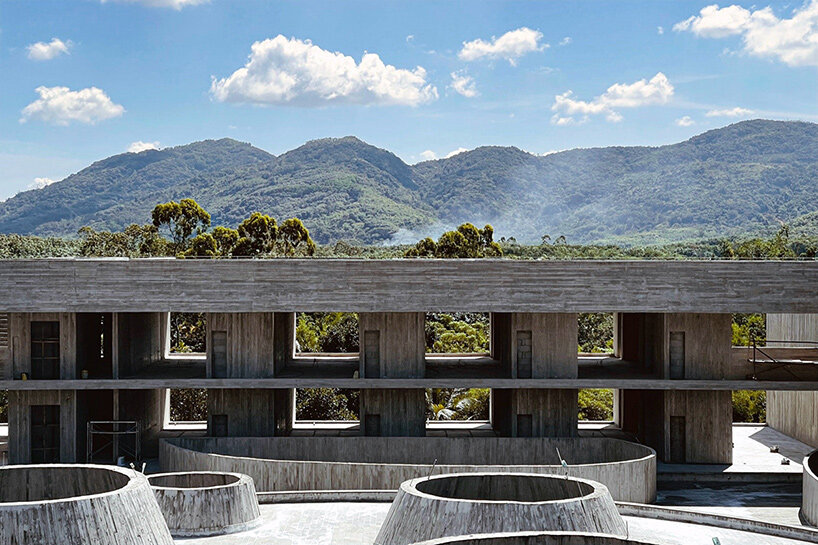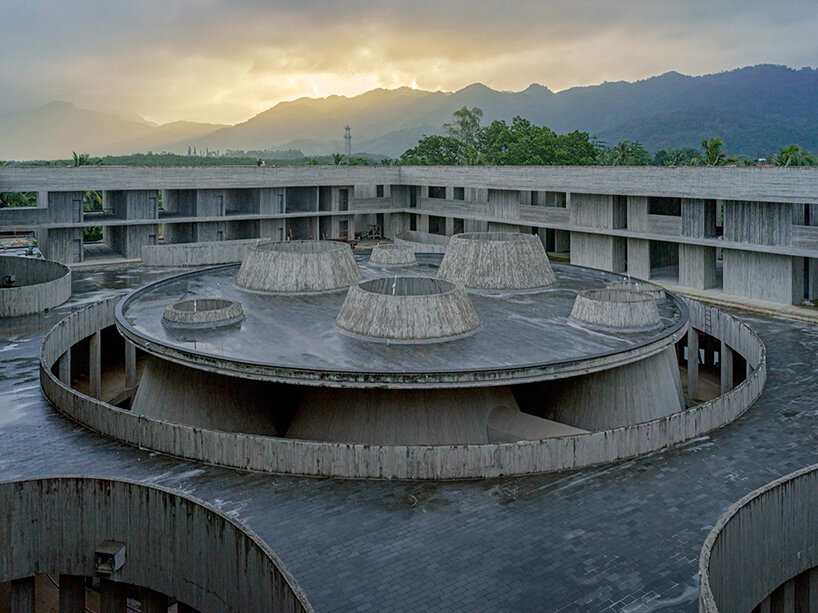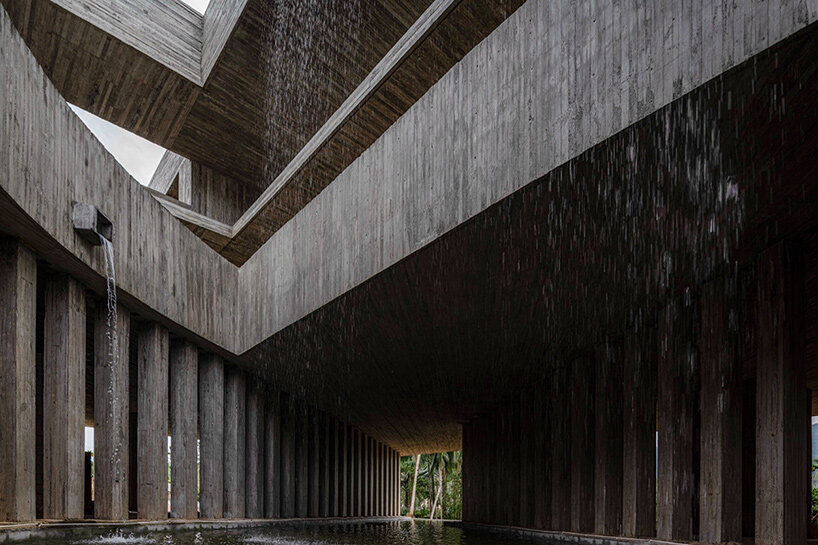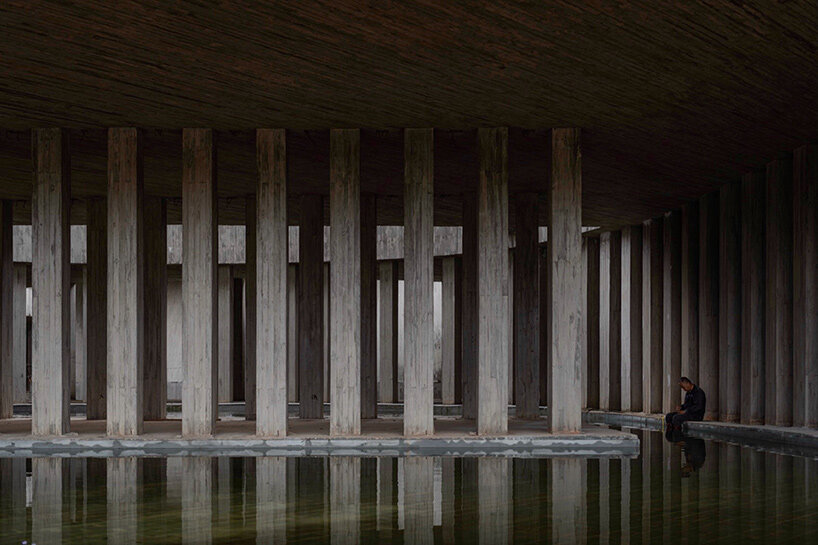Rain house: a building shaped according to the season
Rain House by Synchronicity Architects is located on a high hill hainanWhere the rhythm of rain defines both landscape and life. Conceived during a sudden heavy rain, its design began with observations of the site’s behavior under changing weather. Rain reveals the contours of the terrain, creates runoff pathways and delineates subtle boundaries between water and land.
From these transitory lines, the architects established the basis of the project – a five-metre height that lifts the building above the floodplain while aligning it with the natural order revealed by the storm.
Hainan’s monsoon climate requires a building that is flexible. The island’s humid air and fierce storms leave little choice in terms of ingredients. Solid Both structure and protection were created – dense enough to resist wind and erosion, stable enough to support life through extremes. Wide balconies pulled away from the walls follow the same practical logic. They control sunlight and redirect oblique rain to create sheltered walkways that remain breathable and open to the wind.
Images © Wang Ning, Ann Li, Guo Xi, Han Tao
Courtyard as storage space
From its elevated base, Synchronicity’s Rain House evolves upwards towards a square courtyard. The form is reminiscent of familiar spatial conventions, yet the architects sought openness rather than enclosure. Suspended above the landscape, the courtyard serves as the heart of the project. It is quiet during the day when filtered light and birdsong penetrate through the void, and lively in the evening when it hosts performances and informal gatherings. Its geometry creates a sense of permanence, while its height creates a sense of air, light and suspension.
Below, the ground floor follows a more organic rhythm. The paths curve with the contours of the hill and the patterns of the forest, creating natural corridors that allow air and water to circulate. Trees and a pillar located along the slope, define this lower level. The pillars form a porous boundary through which sound, air and light pass freely.

Rain House in Hainan rises from a hill shaped by rain and wind
Architecture of Synchronicity in Dialogue with Water
In the center of the Rain House, Synchronicity organizes a water court, where water from the mountain spring is directed under the eaves and along the line of the columns. The movement of air on the surface cools the shady corridors, creating a microclimate that adjusts to the heat of the island. The space feels both sheltered and open, its temperature changing subtly with the direction of the wind. Over time, the Water Court has become a favorite gathering place, where the environmental logic of architecture transforms into everyday comfort.
The roof continues this dialogue. Rainwater collected by its sloping surfaces flows through narrow channels, falling in thin curtains before descending into the courtyard and pond below. Each rainfall reactivates the building, turning the weather into a visible and acoustic presence. The house becomes a vessel for the water cycle, where the path of each drop traces the logic of the structure.

Synchronicity Architects designed the building to suit Hainan’s climate
Beneath the courtyard is the ‘Granary’, an underground art space illuminated by a domed skylight. The room retains the cool of stone and the echo of water, allowing light and sound to play softly. The design recalls its agricultural memory by turning the site inward – a space facing the sky through filtered light rather than the open air.
Synchronicity Architects preserved fragments of the site’s earlier life: a water tower, bricks reused as aggregate, a restored well that is connected to the new system. These gestures continue the physical lifecycle rather than memorizing it. Traces of formwork and local workmanship remain intact on the surfaces. Villagers participated in the construction, their methods reflected tactile imperfections in the building. This gives a sense of continuity to the collective labor structure – it is designed to evolve rather than conclude.

Rainwater falls from the roof to the pond, turning each storm into an event
The Rain House serves as a moving record. Weather, vegetation and occupation constantly change its surfaces. Algae creep into damp corners, fruit trees grow near the pond, and new exhibits spring up within the granary. In this environment, architecture is considered as a means of adaptation. Its durability depends on maintenance and renewal.
The broader significance of the project lies in its methodology. It positions climate as an active generator of form, placing temporal and environmental processes at the core of architectural thinking. Rather than being a symbol of regional identity, the Rain House allows regional conditions – wind, rain, labor – to define its structure and organization.

Concrete piles and deep terraces protect the island from storms




